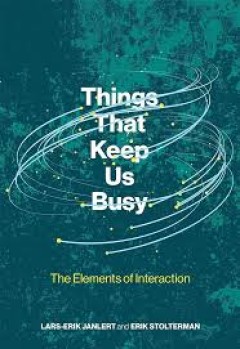Filter by

AI, Data, and Digitalization : First International Symposium, SAIDD 2023, Sog…
This open access book constitutes the revised selected papers of the First International Symposium on AI, Data and Digitalization, SAIDD 2023, held in Sogndal, Norway, during May 9–10, 2023. The 13 full papers included in this volume were carefully reviewed and selected from 42 submissions. The papers deal with the impact of data and AI on the digital revolution and their contribution to sol…
- Edition
- -
- ISBN/ISSN
- 978-3-031-53770-7
- Collation
- X, 203
- Series Title
- 1810
- Call Number
- 001 AID

Supercomputing Frontiers: 5th Asian Conference, SCFA 2019, Singapore, March 1…
This open access book constitutes the refereed proceedings of the 5th Asian Supercomputing Conference, SCFA 2019, held in Singapore in March 2019. The 6 full papers presented in this book were carefully reviewed and selected from 33 submissions. They cover a range of topics including memory fault handling, linear algebra, image processing, heterogeneous computing, resource usage prediction, an…
- Edition
- 1
- ISBN/ISSN
- 9783030186456
- Collation
- IX, 107
- Series Title
- -
- Call Number
- -

Supercomputing Frontiers: 6th Asian Conference, SCFA 2020, Singapore, Februar…
This open access book constitutes the refereed proceedings of the 6th Asian Supercomputing Conference, SCFA 2020, which was planned to be held in February 2020, but unfortunately, the physical conference was cancelled due to the COVID-19 pandemic.The 8 full papers presented in this book were carefully reviewed and selected from 22 submissions. They cover a range of topics including file systems…
- Edition
- 1
- ISBN/ISSN
- 9783030488420
- Collation
- IX, 139
- Series Title
- -
- Call Number
- -

Enhanced Living Environments: Algorithms, Architectures, Platforms, and Systems
This open access book was prepared as a Final Publication of the COST Action IC1303 “Algorithms, Architectures and Platforms for Enhanced Living Environments (AAPELE)”. The concept of Enhanced Living Environments (ELE) refers to the area of Ambient Assisted Living (AAL) that is more related with Information and Communication Technologies (ICT). Effective ELE solutions require appropriate IC…
- Edition
- 1
- ISBN/ISSN
- 9783030107529
- Collation
- -
- Series Title
- -
- Call Number
- -

Supercomputing Frontiers: 7th Asian Conference, SCFA 2022, Singapore, March 1…
This open access book constitutes the refereed proceedings of the 7th Asian Conference Supercomputing Conference, SCFA 2022, which took place in Singapore in March 2022. The 8 full papers presented in this book were carefully reviewed and selected from 21 submissions. They cover a range of topics including file systems, memory hierarchy, HPC cloud platform, container image configuration workfl…
- Edition
- 1
- ISBN/ISSN
- 9783031104190
- Collation
- VIII, 141
- Series Title
- -
- Call Number
- -

The internet of things
We turn on the lights in our house from a desk in an office miles away. Our refrigerator alerts us to buy milk on the way home. A package of cookies on the supermarket shelf suggests that we buy it, based on past purchases. The cookies themselves are on the shelf because of a "smart" supply chain. When we get home, the thermostat has already adjusted the temperature so that it's toasty or braci…
- Edition
- -
- ISBN/ISSN
- 9780262328937
- Collation
- 1 online resource (xviii, 210 pages).
- Series Title
- -
- Call Number
- -

Generating language-based environments
"An MIT Press classic."Facsim. of ed. originally published: ?1984.This book addresses a fundamental software engineering issue, applying formal techniques and rigorous analysis to a practical problem of great current interest: the incorporation of language-specific knowledge in interactive programming environments. It makes a basic contribution in this area by proposing an attribute-grammar fra…
- Edition
- -
- ISBN/ISSN
- 0262256851
- Collation
- 1 online resource (138 pages)
- Series Title
- -
- Call Number
- 005 REP g

Finite State Machines in Hardware: Theory and Design (with VHDL and SystemVer…
Modern, complex digital systems invariably include hardware-implemented finite state machines. The correct design of such parts is crucial for attaining proper system performance. This book offers detailed, comprehensive coverage of the theory and design for any category of hardware-implemented finite state machines. It describes crucial design problems that lead to incorrect or far from optima…
- Edition
- -
- ISBN/ISSN
- 9780262319096
- Collation
- 1 online resource (x, 337 pages) :illustrations
- Series Title
- -
- Call Number
- -

Things that keep us busy :the elements of interaction
We are surrounded by interactive devices, artifacts, and systems. The general assumption is that interactivity is good -- that it is a positive feature associated with being modern, efficient, fast, flexible, and in control. Yet there is no very precise idea of what interaction is and what interactivity means. In this book, Lars-Erik Janlert and Erik Stolterman investigate the elements of inter…
- Edition
- -
- ISBN/ISSN
- 9780262341813
- Collation
- 1 online resource (231 pages) :illustrations
- Series Title
- -
- Call Number
- -

Designing with the body :somaesthetic interaction design
Interaction design that entails a qualitative shift from a symbolic, language-oriented stance to an experiential stance that encompasses the entire design and use cycle. With the rise of ubiquitous technology, data-driven design, and the Internet of Things, our interactions and interfaces with technology are about to change dramatically, incorporating such emerging technologies as shape-changin…
- Edition
- -
- ISBN/ISSN
- 9780262348324
- Collation
- 1 online resource.
- Series Title
- -
- Call Number
- -
 Computer Science, Information & General Works
Computer Science, Information & General Works  Philosophy & Psychology
Philosophy & Psychology  Religion
Religion  Social Sciences
Social Sciences  Language
Language  Pure Science
Pure Science  Applied Sciences
Applied Sciences  Art & Recreation
Art & Recreation  Literature
Literature  History & Geography
History & Geography